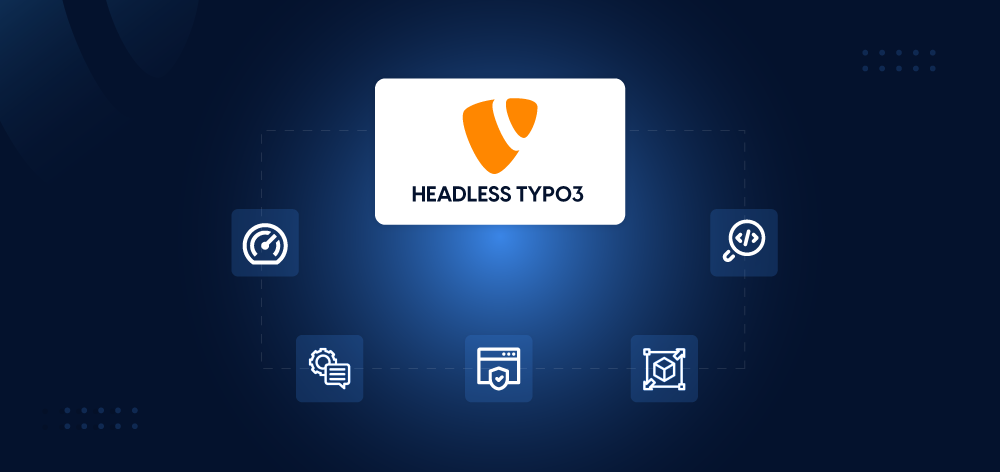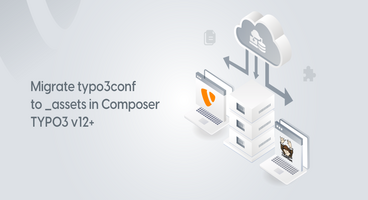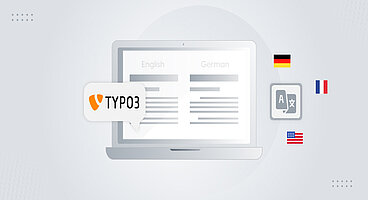Companies searching for a free content management system should look no further. Headless TYPO3 offers novel development and deployment benefits — its open-source nature sets it apart from many similar alternatives. What should developers expect out of adoption? More importantly, how should they approach implementation to maximize its effectiveness?
What Is Headless TYPO3?
TYPO3 is a content management system (CMS) based on the hypertext preprocessor (PHP) programming language. It doesn’t require a monthly subscription fee, unlike many other similar solutions. Despite being open source, it is backed by a nonprofit organization of hundreds of members who contribute monthly to cover expenses. This sizable professional community creates an enterprise-level ecosystem, enabling collective decision-making.
Headless TYPO3 is a headless CMS — a back-end web system that acts as a repository, making content available without a built-in front-end — that separates management and presentation. It enables developers to deliver images, audio, video and text via an application programming interface (API) to multiple touchpoints. Since this multi-channel deployment relies on a centralized system, it eliminates the need for distributed repositories.
More specifically, this headless CMS is an extension that offers a back-end-only solution. It is framework agnostic — it has no default front-end framework — meaning developers can publish content on any device or channel via API calls. Essentially, it facilitates the integration of TYPO3’s core elements with modern visual and interactive frameworks, providing a flexible delivery system in a single location.
This extension acts as a JavaScript Object Notation (JSON) API provider, decoupling the front-end and back-end while maintaining core TYPO3 functionality. Delivering webpage images, text, videos and audio in JSON format modernizes the user experience. It specifies how the client should request to retrieve or modify resources —- and how the server should respond to those requests — substantially simplifying exchanges.
What Are the Benefits of Using a Headless CMS?
There are several reasons why utilizing headless CMSes over conventional alternatives can be beneficial.
1. Website Performance Improvements
Decoupling the front-end and back-end improves loading, particularly for larger companies with content-heavy websites. Considering that even a one-second delay in webpage load time decreases customer satisfaction by 16%, this noticeable difference could reduce bounce rates.
2. Development Scalability Enhancement
This type of CMS can support multiple front-ends and channels. Moreover, replacing a single component doesn’t require comprehensive system reimplementation. Individuals using it benefit from enhanced scalability, regardless of their website or business size.
3. Multi-Channel Standardization
Any device that can access the internet can use web APIs, meaning utilization facilitates standardization and brand recognition. In other words, a headless CMS leveraging one for multi-channel distribution can improve site engagement and enhance the user experience.
What Are the Benefits of Using Headless TYPO3?
Several benefits to using a headless TYPO3 exist for end users and web developers alike:
1. Better Baseline Website Security
By default, headless TYPO3’s core authentication modules are secure. Moreover, its integration capabilities provide a centralized extension repository, enhancing security. It even mitigates some cyberattacks —- namely distributed denial-of-service attacks — with client-side rendering.
2. Out-of-the-Box Personalization
This extension offers core customization via back-end layout configuration. Additionally, it provides custom content element types and plugins for tailoring a site’s capabilities and features. Of course, open-source capabilities enable personalization for those familiar with PHP.
Back-end personalization is vital to flexible content delivery. The fact that 49% of businesses have adopted marketing automation technologies — largely to accelerate custom data collection, analysis and utilization — underscores the value of these features.
3. Out-of-the-Box Extension Support
Companies can use TYPO3 to utilize third-party extensions, both free and paid, to extend their website’s functionality. One example is ext:felogin, which enables users to log into the front-end. These seamless integrations facilitate a headless environment’s flexibility.
Best Practices for Using Headless TYPO3
If you’re considering leveraging this extension, consider following these best practices.
1. Optimize Code
Avoid loading unnecessary JavaScript files before your site’s main content. Otherwise, you will inadvertently increase your load times, resulting in higher bounce rates and lower user satisfaction. Ensure you eliminate render-blocking resources. Code optimization may seem like an obvious strategy, but it is often not properly utilized in practice.
2. Secure PHP
PHP’s popularity and accessibility make it a valuable target for cybercriminals, putting your site at risk for cross-site scripting, source code exposure, cross-site request forgery and structured query language (SQL) injection attacks.
Inaction could result in General Data Protection Regulation fines — which reached a record high of approximately €2.1 billion in 2023, averaging €4.4 million per violation — for your company. Ensure you update your PHP version and use prepared SQL statements.
3. Optimize Images
Making your site’s images smaller takes time but can significantly improve loading times. You should also ensure everything displays correctly on the front end. While TYPO3 has a default editor to manage dimensions, manually coding in images can cause undesirable scaling. Ensure you mitigate this issue by proactively optimizing visual elements.
4. Update on Time
Since this headless CMS is open source, its members typically quickly identify and resolve vulnerabilities. However, that means bad actors can compare versions to identify changes, allowing them to exploit security weaknesses your non-updated systems still possess.
Ensure you consistently update your extensions and core content elements on time to prevent anyone from leveraging patched vulnerabilities to inject malicious code or exfiltrate sensitive user data. Your diligence is key to maintaining visitors’ privacy.
Useful Headless TYPO3 Templates
Are you planning to build your TYPO3 website using Headless TYPO3 Templates? If you're considering building your TYPO3 website with headless TYPO3 templates, you're on the right path to creating an optimal site. Headless templates separate the front-end and back-end, giving you more flexibility and control over your website's design and performance.
T3AYU - TYPO3 Headless Theme
This responsive TYPO3 business template is perfect for start-up owners, IT solutions, small digital agencies, marketing agencies, consulting firms, and small business owners. It's designed with the best industry coding standards and integrates the latest technology stacks to ensure top performance. Plus, it's fully compatible with TYPO3 v12, making it a reliable and modern choice for your business website.
T3 ReactBootstrap - Headless TYPO3 Template
This multipurpose TYPO3 headless theme is built with popular technologies like React and Bootstrap, ensuring your site is mobile-friendly on any device. It's smart and flexible, offering over 120 custom elements and an intuitive admin panel to easily customize your site. Learn more about this versatile TYPO3 theme today!
T3Shiva - Multipurpose TYPO3 ReactJs Template
Discover the ultimate TYPO3 headless template, expertly crafted with React and NextJS. This theme is designed with a focus on modern design and lightning-fast speed, loading in just 2 seconds! It comes with over 15+ TYPO3 demos, pre-made pages, and multiple layout variations, making it perfect for any project. Whether you're building a sleek business site or a dynamic portfolio, this TYPO3 theme has everything you need to create a stunning website.
T3Reva - Multipurpose ReactJs & NextJs TYPO3 Template
This TYPO3 theme is crafted with the latest technologies for a mobile-responsive design and outstanding website performance. It features a user-friendly admin panel, modern TYPO3 elements, and full support for TYPO3 v12. Know more about the template!
Conclusion
While adopting this framework-agnostic, API-first, enterprise-level environment can be beneficial, developers must remember to follow best practices to maximize their gains. Securing their site, optimizing it manually and leveraging personalization techniques enable them to avoid fines, expand their customer base and get the most out of this system.









I found the blog on Headless TYPO3 to be incredibly informative. It clearly explained the benefits of using a headless CMS and how it stands out from other free content management systems. The tips on implementation were practical and easy to understand.